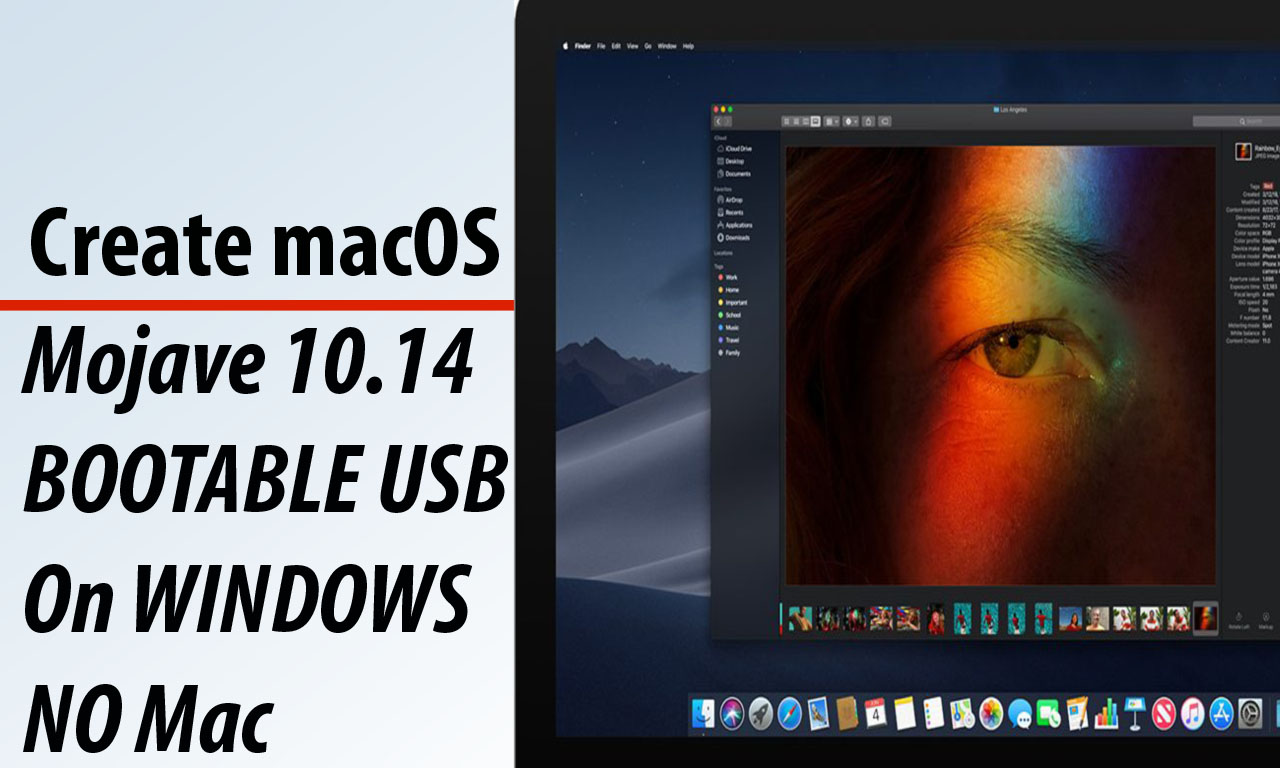

- #Create windows 10 bootable usb on mac mojave install#
- #Create windows 10 bootable usb on mac mojave upgrade#
- #Create windows 10 bootable usb on mac mojave software#
Copy the files back to your Mac or an externally used Mac drive (reconnect the drive to the Mac once the restoration process is over). When the save process is complete, verify the recovered data from the backup storage drive.
#Create windows 10 bootable usb on mac mojave software#
The software works flawlessly with the older & newer version of MacBook Pro, MacBook Air, iMac, iMac Pro, and Mac Mini etc. In such scenarios, you can rely on a data recovery software-such as the editor’s choice Stellar Data Recovery Professional for Mac-that can recover your lost data after macOS Mojave installation.

There are chances that you did not take backup to an external backup drive, or in the rare case, the backup itself was lost, damaged, or unavailable. This is because, during macOS installation, the installer erases the startup partition completely or the entire storage drive, depending upon your choice during installation. If you do not have a backup, then you end up losing all your data stored in the Mac drive. Backup helps to restore all the data back to Mac’s internal storage drive, containing the new macOS.
#Create windows 10 bootable usb on mac mojave upgrade#
While performing macOS upgrade or fresh installation, you must back up data to an external storage medium.
#Create windows 10 bootable usb on mac mojave install#
Backup the entire drive before performing a clean install on your Mac machine.Note: Erase the flash drive to HFS+ (Mac OS Extended (Journaled)) but not APFS. The Terminal creates the installer drive on the opted USB flash drive. Type the administrator password when prompted.Warning: The command erases the flash drive so check there are no stored files backup the files, if they exist, before executing the sudo command. Open Terminal and enter the next command: sudo (drag and drop the installer from application folder to locate its path) –volume (drag and drop the USB flash drive from the Mac volumes to specify its path) –nointeraction –downloadassets.Connect the USB flash drive with at least 8 Gigabytes storage space to your Mac.Locate the installer from the Applications folder (copy it to the desktop if you desire).When the download completes, quit the installer, as it will launch itself automatically.Download macOS Mojave 10.14 from App Store.


 0 kommentar(er)
0 kommentar(er)
